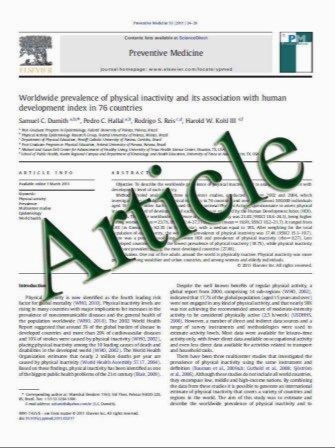Pre- and post-synaptic cortical cholinergic deficits are proportional to amyloid plaque presence and density at preclinical stages of Alzheimer’s disease
- نوع فایل : کتاب
- زبان : انگلیسی
- مؤلف : Pamela E. Potter Paula K. Rauschkolb Yoga Pandya Lucia I. Sue Marwan N. Sabbagh Douglas G. Walker Thomas G. Beach
- چاپ و سال / کشور: 2011
Description
Amyloid imaging has identified cognitively normal older people with plaques as a group possibly at increased risk for developing Alzheimer’s disease-related dementia. It is important to begin to thoroughly characterize this group so that preventative therapies might be tested. Existing cholinotropic agents are a logical choice for preventative therapy as experimental evidence suggests that they are anti-amyloidogenic and clinical trials have shown that they delay progression of mild cognitive impairment to dementia. A detailed understanding of the status of the cortical cholinergic system in preclinical AD is still lacking, however. For more than 30 years, depletion of the cortical cholinergic system has been known to be one of the characteristic features of AD. Reports to date have suggested that some cholinergic markers are altered prior to cognitive impairment while others may show changes only at later stages of dementia. These studies have generally been limited by relatively small sample sizes, long postmortem intervals and insufficient definition of control and AD subjects by the defining histopathology. We, therefore, examined pre- and post-synaptic elements of the cortical cholinergic system in frontal and parietal cortex in 87 deceased subjects, including non-demented elderly with and without amyloid plaques as well as demented persons with neuropathologically confirmed AD. Choline acetyltransferase (ChAT) activity was used as a presynaptic marker while displacement of 3H-pirenzepine binding by oxotremorine-M in the presence and absence of GppNHp was used to assess postsynaptic M1 receptor coupling. The results indicate that cortical ChAT activity as well as M1 receptor coupling are both significantly decreased in nondemented elderly subjects with amyloid plaques and are more pronounced in subjects with AD and dementia. These findings confirm that cortical cholinergic dysfunction in AD begins at the preclinical stage of disease and suggest that cholinotropic agents currently used for AD treatment are a logical choice for preventative therapy.
Acta Neuropathol (2011) 122:49–60 DOI 10.1007/s00401-011-0831-1 Received: 25 February 2011 / Revised: 19 April 2011 / Accepted: 23 April 2011 / Published online: 1 May 2011


